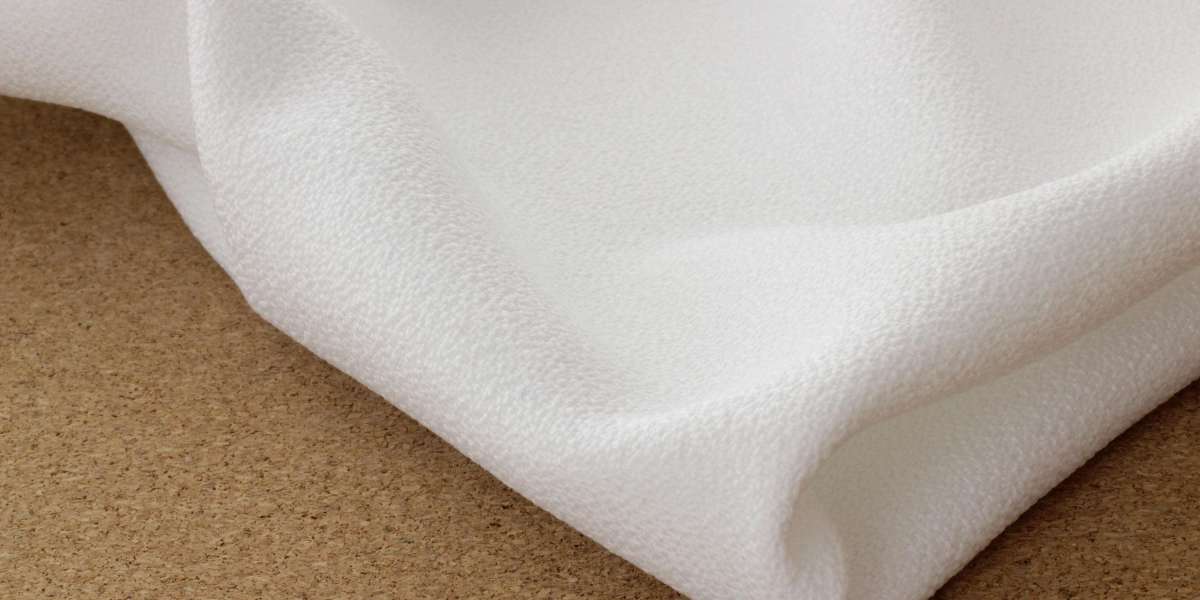Recycled polyester fabric is becoming more common in fashion and home goods, thanks to growing environmental awareness and improvements in textile recycling. While it offers many of the same benefits as virgin polyester—durability, wrinkle resistance, and quick drying—it also requires specific care to maintain its quality and sustainability advantages over time.
This guide breaks down the best ways to clean, dry, store, and extend the life of recycled polyester fabric. By understanding its characteristics and making a few mindful choices, you can keep your garments and textiles looking good while minimizing their environmental impact.
1. Understand the Fabric First
Recycled polyester is made by melting down used plastic—often bottles or waste fibers—and re-spinning it into new polyester fibers. These fibers are woven or knit into fabric that looks and feels just like conventional polyester.
One common form is recycled polyester staple fiber, which is used in insulation, stuffing, and textiles. These short fibers are especially prone to shedding during washing, so care methods are important not just for longevity but also for minimizing microplastic pollution.
2. Wash with Care
Recycled polyester can usually be machine-washed, but doing it right makes a big difference.
- Use cold water: Washing in cold water preserves the fabric's strength and reduces energy usage. Hot water can cause unnecessary wear and damage the synthetic fibers.
- Choose a gentle cycle: Reduce agitation in the wash to minimize microplastic shedding and wear.
- Avoid harsh detergents: Opt for mild, eco-friendly detergents. Strong chemicals can break down the structure of synthetic fibers more quickly.
- Use a microplastic-catching bag: Tools like Guppyfriend or a microfiber filter can trap tiny fibers that shed during the wash. This prevents them from entering water systems and harming marine life.
- Wash less frequently: Unless the garment is heavily soiled or sweaty, it's often okay to wear it several times before washing. This reduces water use and extends the life of the fabric.
3. Dry Gently
Drying recycled polyester the right way can prevent shrinkage and preserve fabric texture.
- Air-dry when possible: Hanging or laying flat to dry avoids heat damage and cuts energy use. The fabric dries relatively quickly, making this an easy swap.
- Avoid high heat in the dryer: If you must use a dryer, select a low or no-heat setting. High temperatures can degrade fibers and contribute to pilling or shrinking.
4. Watch for Pilling
Recycled polyester is prone to pilling, especially in high-friction areas like underarms, cuffs, and thighs.
- Turn clothes inside out before washing. This reduces surface friction and helps avoid fabric pills.
- Use a fabric shaver: Occasionally remove pills using a gentle fabric shaver or sweater comb. Avoid scissors or razors that could cut or weaken the fabric.
5. Iron Sparingly
Polyester fabrics, including recycled varieties, resist wrinkles fairly well. But if ironing is needed:
- Use the lowest heat setting possible. Too much heat can melt synthetic fibers.
- Use a pressing cloth or iron inside-out. This adds an extra layer of protection and keeps fabric surfaces smooth and intact.
6. Store It Right
Proper storage also extends the life of recycled polyester fabrics.
- Keep out of direct sunlight: Prolonged UV exposure can weaken and discolor synthetic fibers.
- Avoid damp environments: Store in a cool, dry place to prevent mildew or bacterial growth.
- Fold, don’t hang, for stretchy garments: For recycled polyester knits or blends with elastane, folding prevents fabric from stretching out over time.
7. Repair Instead of Replacing
Recycled polyester is durable, but like all textiles, it can wear down eventually. Small issues like loose seams, tiny holes, or stuck zippers can often be fixed at home.
- Use polyester thread for repairs: This ensures the stitch has similar strength and stretch as the original material.
- Patch worn areas early: Small patches can prevent bigger tears or fraying, especially in high-stress zones like elbows or knees.
8. Be Mindful at End of Life
When the fabric truly wears out, it’s important to dispose of it thoughtfully.
- Check for recycling options: Some apparel brands offer take-back programs or recycling for garments made with polyester or blends.
- Avoid tossing it in the trash: Polyester doesn’t biodegrade. Instead, try repurposing worn fabric into rags, pet bedding, or small craft materials.
In some regions, industrial textile recycling plants—often operated or supported by an rpet manufacturer—can reprocess old polyester into usable fiber again.
9. Recognize Quality Differences
Not all recycled polyester is created equal. The source of the material, the spinning process, and the weave or knit all affect how it behaves. A high-quality item made by a reputable rpet manufacturer will likely last longer and perform better than a fast-fashion equivalent.
If you’re unsure, check the fabric content label and research the brand’s sustainability practices. Look for certifications such as GRS (Global Recycled Standard) or OEKO-TEX to confirm responsible production.
10. Educate and Advocate
Caring for recycled polyester isn’t just about laundry—it’s about participation in a larger sustainable loop. The more we learn to care for what we already own, the less we rely on constant production.
Share tips with friends. Encourage brands to design for durability and recyclability. Support innovation in materials that go beyond petroleum-based fibers altogether.
Conclusion
Caring for recycled polyester effectively requires small but meaningful adjustments to how we wash, dry, store, and dispose of our clothes. These habits not only protect the integrity of the fabric but also reduce its environmental footprint.
Whether you're wearing a jacket made from recycled polyester staple fiber or using a home good stitched from RPET threads, your choices can prolong its life and keep it out of landfills. Sustainable fashion doesn’t stop at the checkout counter—it lives in your laundry room, too.


